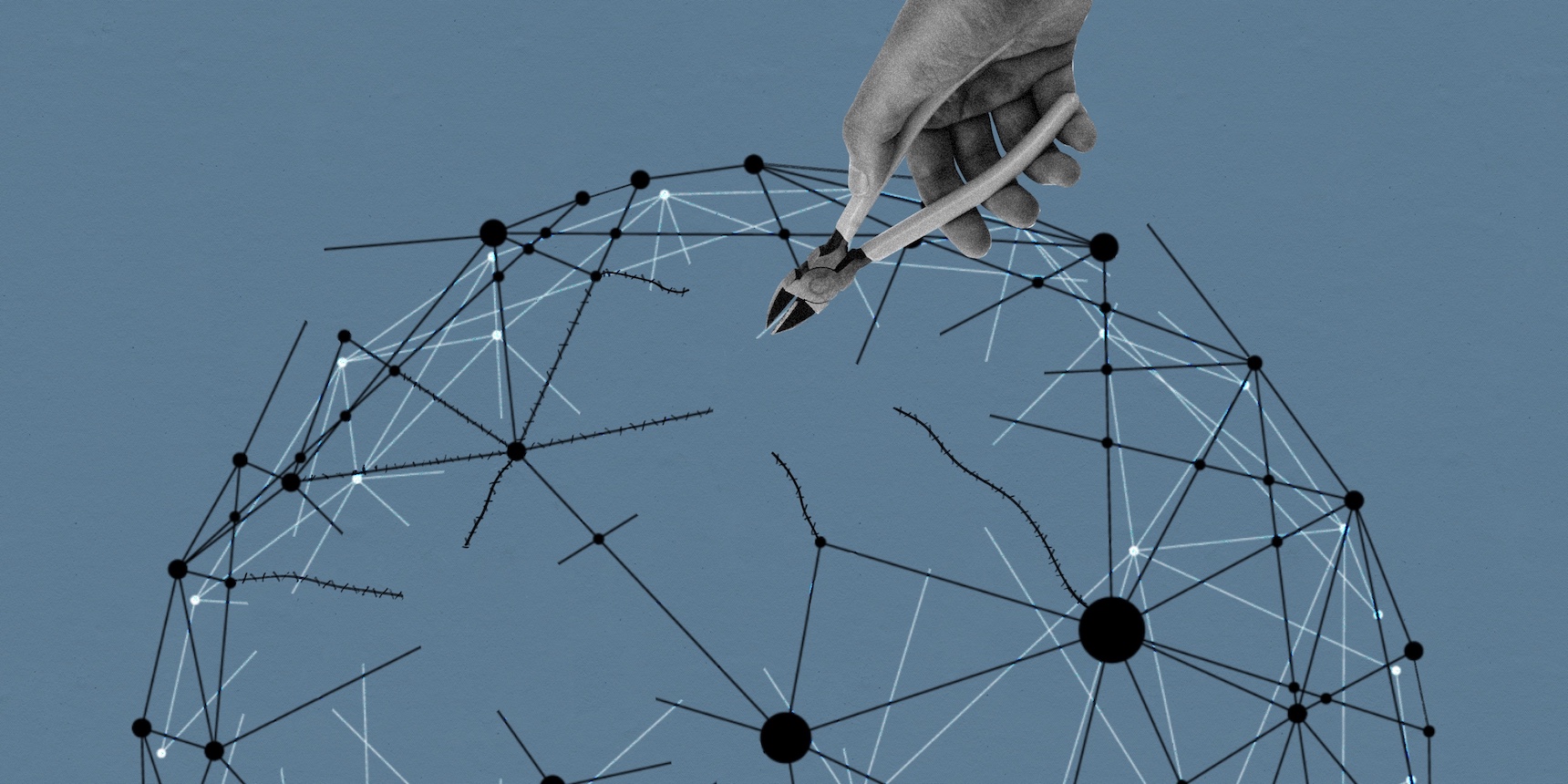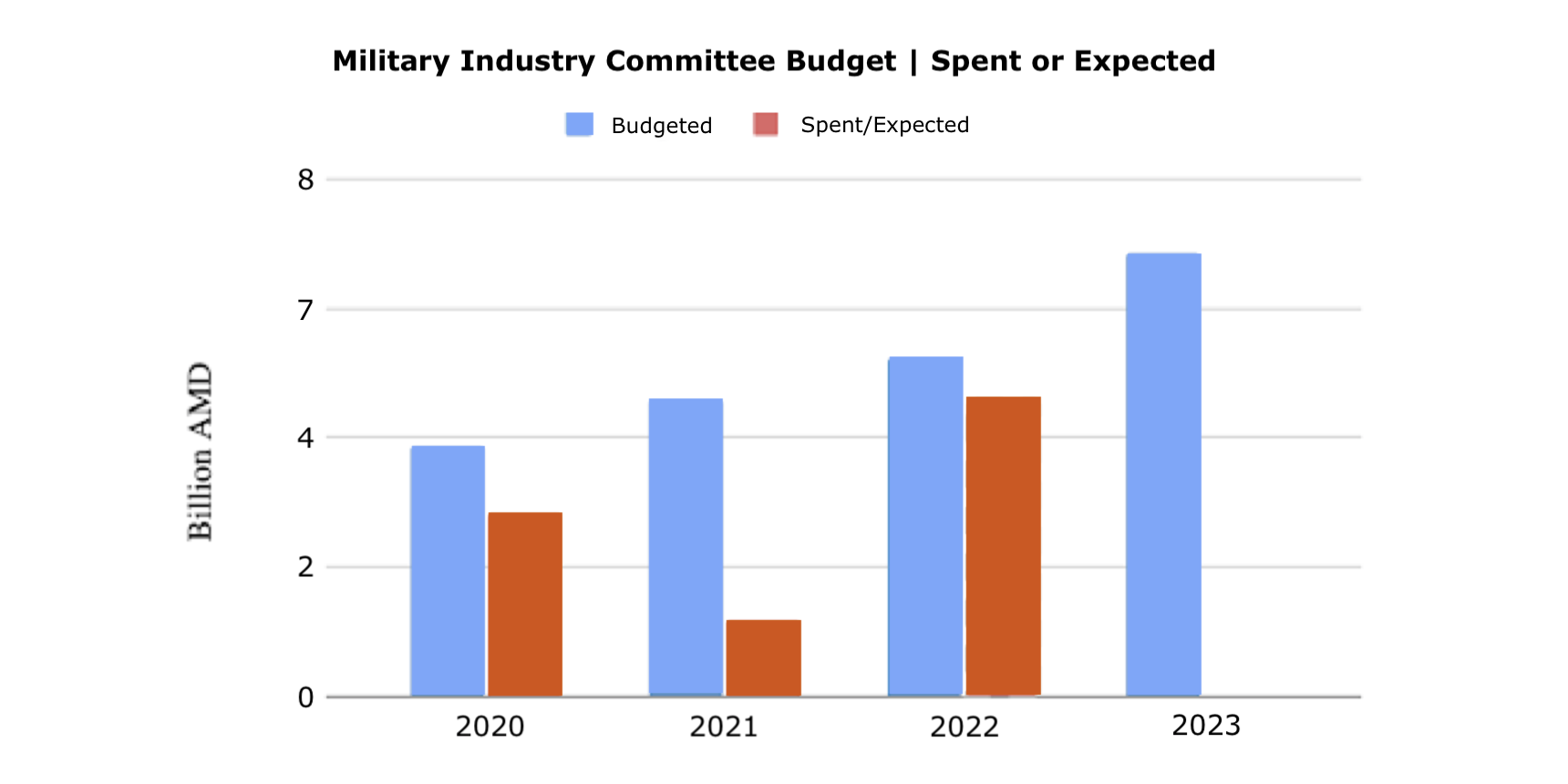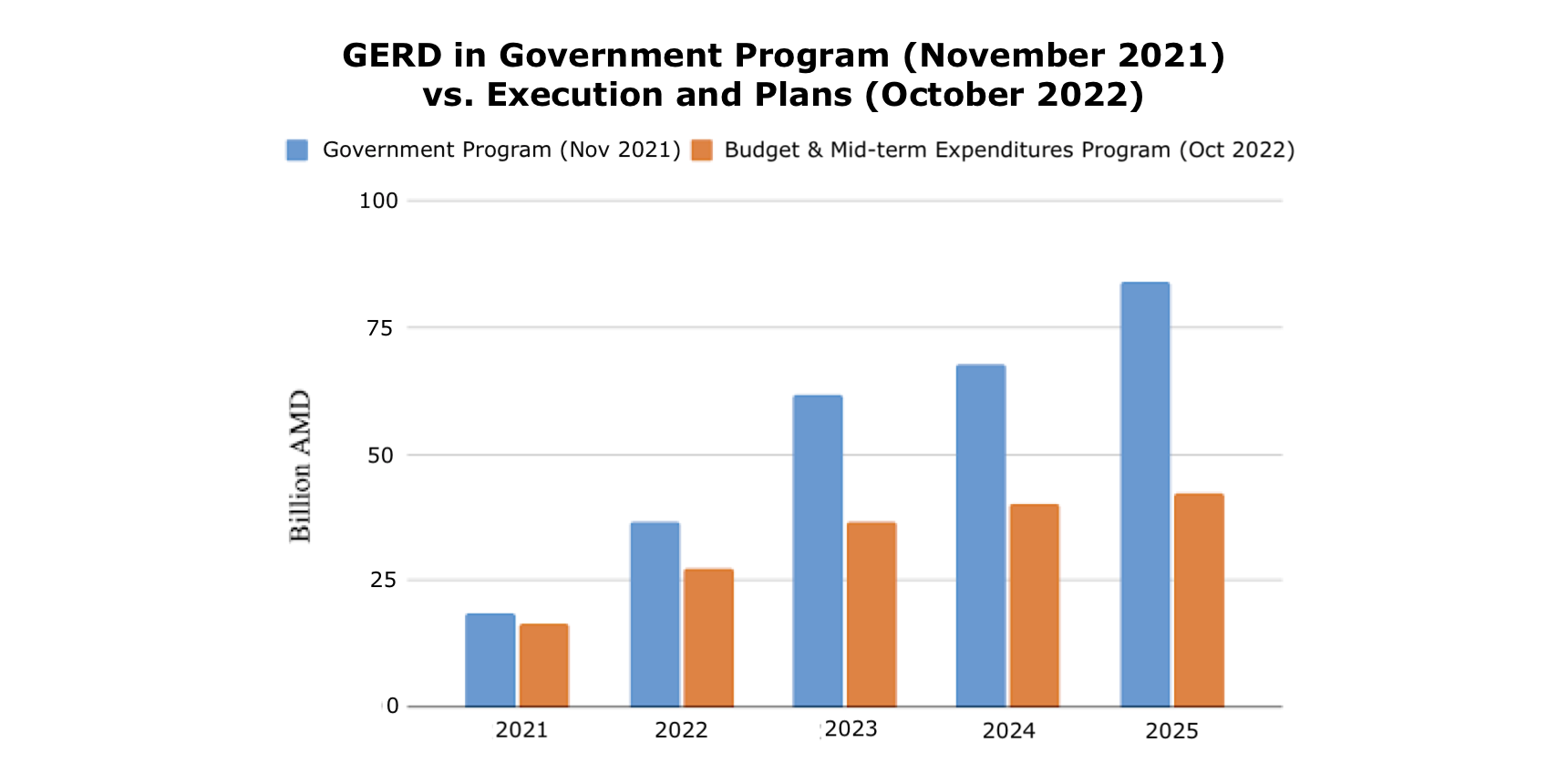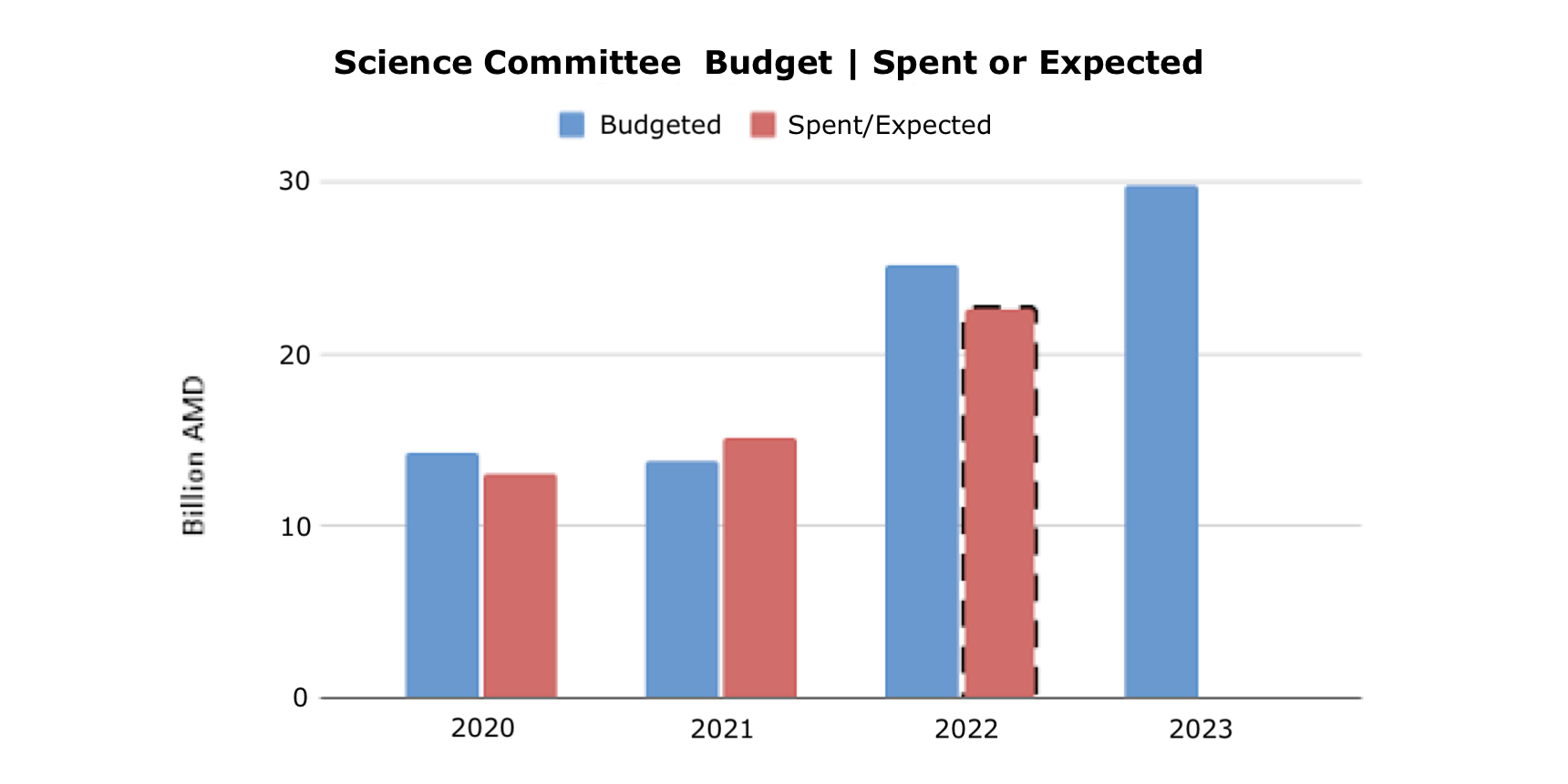
*Manya Israyelyan is an employee of Gituzh
The Gituzh initiative issued a statement on November 10, 2022 expressing its disappointment in the Armenian Government’s inability to support the country’s scientific modernization and to implement plans around science and research and development investments. The statement, based on an assessment of the science budget’s performance for 2021-2022, budget plans for the near future, and the budget for targeted research and development (R&D) in defense indicate that the allocations stipulated in the Government’s program for 2021-2026 will not be fully dispersed. The administration’s failure to implement even already-approved programs will precipitate another period of stagnation in Armenia’s R&D ecosystem’s development.
Despite the ambitious investment plans envisaged in the Government’s 2021-2026 program, an analysis of their scope and expenditure for 2021-2022 and the budget cuts from the R&D budget reveal a gap between the government’s plans in November 2021, and the actual and planned performances. In 2021, for example, the government spent only 1.17 billion AMD from the 4.7 billion AMD allocated for the “Targeted R&D in the Field of Defense” program. In April and November 2022, 395 and 295 million AMD respectively was redistributed for “other purposes” from the same program budget. During a parliamentary Q&A with the Government on September 13, 2022, Prime Minister Nikol Pashinyan stated, “…if someone tells you that today’s military-industrial companies are ready to absorb more than the government allocates, don’t take it seriously…”
Gituzh member Tigran Shahverdyan explains that the budget allocated for the Military Industry Committee (under the Ministry of High-tech Industry) was poorly administered. In 2020, spending fell short and in 2021 only around a quarter of the planned spending was carried out — only 1.17 billion out of 4.7 billion AMD. With the development of Armenia’s defense capabilities being of utmost importance, cutting around 700 million AMD from a total R&D defense budget of 5.2 billion AMD for 2022 is absurd, says Shahverdyan.

Against this backdrop, even more dismaying for Gituzh is PM Pashinyan’s above-mentioned statement. “Such an approach is unacceptable given the volumes of investments in our military industry capabilities through R&D orders during the last two years,” Shahverdyan says, adding that investments should have been primarily made in defense R&D and to boost manufacturing capabilities for companies to be able to absorb more. Instead the whole process failed.
“Money is available, but they don’t come up with good programs,” is a common sentiment quoted by officials. However, in order to better understand the challenges of the military industry, Gituzh has been holding continuous discussions with representatives from the sector, who identified a number of organizational issues, including the fact that the government is not articulating specific R&D needs.
The government is responsible for identifying its needs, formulating them in the form of R&D requests for proposals, and organizing its implementation to induce more innovative and efficient solutions. “The fact that [the government] had the opportunity for two years and wasted it makes such statements unacceptable. At least one should admit that the work was not done properly and learn from that to avoid the same outcome two years from now,” Shahverdyan notes.
This approach will not contribute to the development of the scientific and technological potential needed to address the challenges facing Armenia.

*Gross Domestic Expenditure on R&D (GERD)
The Government’s 2021-2026 program, envisaged gradually increasing investments in science and R&D, as well as ambitious funds for the programs of the Science Committee (that operates under the Ministry of Education, Science, Culture and Sports). Their implementation, however, fell short of the government’s plans, as the chart above reveals.
The disparity between actual expenditures in the Science Committee budget and the Military Industry Committee’s defense R&D is clear. Retrospectively, the Science Committee spent less in 2020 than planned. However, in 2021, when the issue of science and R&D funding began to be actively advocated for, additional allocations for science at the beginning of 2022 indicate greater expenditures than planned. This is not much, but it’s a good start. Officials say that the 2022 science budget was increased by 83%; this, however, includes a 2.5 billion AMD EU grant for the creation of centers of excellence in the field of science. Sadly, the program has not even commenced yet and the year is nearly over. Even if the EU did not provide the grant money, there is no evidence that the state intended to carry out the activity with its own resources. The fact that funds are never mentioned as an issue by officials suggests that the problem is rather a matter of the government’s lack of capacity or willingness.

Restoring Armenia’s Scientific Potential Without a Strategic Approach or Strong Investment Is Impossible
Gituzh, from the very start of formulating its demand of reviving a powerful scientific base as the only path to Armenia’s security and development, expected, as part of the Government’s commitment, R&D intensity/expenditure to be enshrined in the law (minimum share of 1% of GDP or 4% of the state budget), and ensure that the best suited people are assigned the right tasks and deadlines. Such steps would make it possible to implement the outlined scope of R&D by determining the types of orders for R&D organizations and private companies in order to solve the problems that our country faces.
Instead, different officials and departments are attempting to reduce science and R&D allocations. “Particularly we see such pressure coming from the Finance Ministry,” says Shahverdyan. Gituzh would expect the Finance Ministry to be proactive in helping agencies fund R&D to prepare more ambitious and well justified budgets, as consistent R&D programs are the only way to innovate out of the crisis the country is in.
“We still expect that the government will enshrine the R&D intensity in law and will implement it. Namely we expect that the relevant people will be assigned to carry out the R&D work enshrined in the law, but most importantly, that people outside the government will be involved such as scientists, engineers, science administrators, and scientific organizations from the diaspora as well,” Shahverdyan notes.
To develop Armenia’s potential and perform relevant state-ordered R&D, it is imperative that a large number of scientists are recruited from abroad, primarily from the diaspora. Large investments and programs can quickly boost the scientific ecosystem to a level where it can effectively meet the nation’s challenges. Gituzh expects these commitments to be undertaken in reasonable time frames, with decision-makers appointed to include all circles who can expedite the programs.
It is especially important to fill in Armenia’s gaps in scientific and technological advancement. Creating national centers for that purpose and involving teams from abroad will make that possible and attract post-graduate students. It will create a snowball effect, the benefits of which will be reflected at all levels of the country’s higher education and in a few years, in schools as well.
Such critical issues are often sidestepped with false agendas enshrined in laws, such as amalgamating institutes and universities. “The misconception that the best scientific research in the world is carried out by universities must be put to an end. Both forms [universities and independent institutes] are used throughout the world,” emphasized Shahverdyan. He explains that housing scientific research institutes in universities should not have a legal basis nor should these institutes be subordinated to universities. Some countries utilize research chairs at universities. Why then are Armenian scientists not heading those chairs? The answer, according to Shahverdyan, is the scant number of students and the lack of career opportunities that scientists could offer them in order to retain and develop them. “A scientist’s motivation for lecturing is the opportunity of gaining teammates. If our system does not meet that need, you cannot force professors into higher education,” Shahverdyan says.
With the decline of undergraduate and graduate degree students in Armenia, the country’s human capital can’t build the scientific ecosystem on its own. Consequently, if conditions for foreign scientists to come to Armenia are created, both in quality and quantity, who will establish research teams and work on priority issues, it will also stimulate interest in science among young scholars.
Relocating to Armenia is not an easy process. Shahverdyan identifies two challenges related to such a move: the physical and the professional environments. The conditions scientists work in and the equipment they use directly shape the results they produce. A professional environment with other competent researchers will effectively generate new ideas.
It is essential to meet these two requirements if we want to attract foreign scientists. This means that from the very start immigration programs should be large-scale to show prospective applicants that they won’t be taking a big risk. Currently, the Science Committee’s programs target ten to twenty people. What is concerning is that almost no one from the fields of science in the diaspora, let alone outside the diaspora, knows about the Science Committee’s programs.
“We should visit prestigious centers, which house many diasporan scientists who can bring in non-Armenian scientists, ignite their interest in the programs so that people want to be part of them,” stresses Shahverdyan.
Armenia’s security, sovereignty and prosperity can be secured in large part through its scientific and technological progress. The lack of systematic approaches, clear goals and ambitious plans, along with half-hearted steps in increasing funding and then not executing it properly, will only lead to the decline of the scientific ecosystem in Armenia. Its rejuvenation requires long-term commitment, serious investments and large-scale migration programs to be able to meet the nation’s needs and ultimately make Armenia a country that adds value in the world.
Creative Tech
Self-Driven: Chinar Movsisyan and the Making of manot
For Chinar Movsisyan, founder and CEO of manot, a genuine love for math and science formed the basis for her academic pursuits, and the desire to apply theory in the real world pushed her pivot to business.
Read moreDecentralizing Tech in Armenia Starts With Education
In order for tech to truly benefit Armenia, it needs to benefit all of Armenia. For this to become a reality, accessibility to education in the regions as well as the creation of more local job opportunities are essential.
Read moreIt’s Time to Pivot Armenia’s Innovation Narrative
What makes Armenia innovative? While there are many promising preconditions, innovation currently occurs in “pockets” in the country rather than at scale. An orientation toward more open collaboration is paramount.
Read moreHow Can Armenia Exploit Its Innovation Potential to Become a High-Income Country?
Despite the critical challenges facing Armenia, achieving security and development, establishing strong state institutions, quality education and healthcare and a fair judicial system remain constant. Science, technology and innovation will be key to its realization, writes Ani Toroyan.
Read moreStrong Foundations, Missing Blueprints
Despite leading the region in many progressive metrics, the past few years have reinforced how peace isn’t something Armenia can take for granted: it must cultivate optimal conditions for innovation because of external threats, and that will take conscious architecting.
Read moreBigStory VC: A New Founder-led Fund Emerges in Armenia
BigStory VC, a founder-led venture capital fund, promises to be the first of its kind, as Armenia’s start-up ecosystem continues to grow and its members attain success.
Read moreFrom the Soviets to Starmus: Positioning Armenia for a Comeback in the Science Sector
As Armenia continues to face geopolitical threats from neighboring Azerbaijan and indifference from the rest of the world, events like the Starmus Festival help strengthen Armenia and its economy, and advance its position on the global stage.
Read moreUnit 1991: Strategic Technological Applications for the Armed Forces
A training course for young men and women launched in 2019 by the FAST Foundation—Unit 1991—is a new military unit focused on the creation of arms using the latest technologies.
Read more








